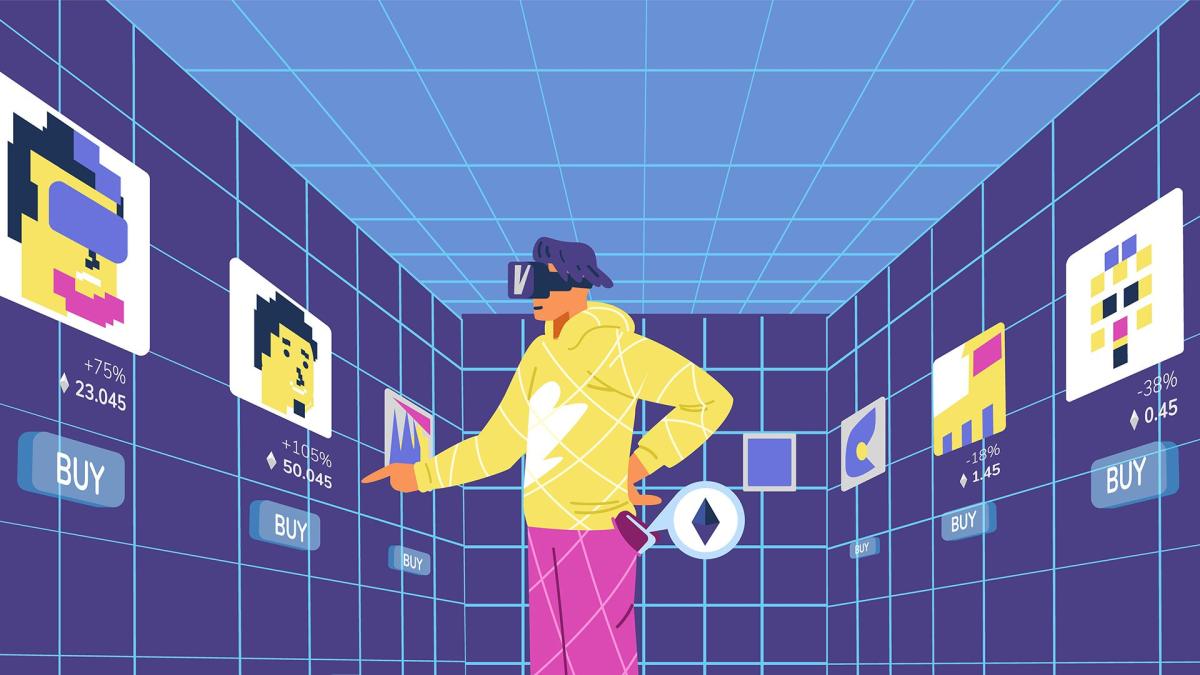NFTs, or non-fungible tokens, have become a staple of the blockchain industry, and developers have sought ways to enable NFT owners to borrow money against the value of their tokens, but doing so safely and reliably is easier said than done. To understand the challenges of lending/borrowing apps for NFTs, and the risks they pose to lenders, it helps to understand how cryptocurrency lending/borrowing apps work.
Decentralized Finance (DeFi) lending/lending apps like Aave, Compound or Maker Protocol allow users (the borrowers) to deposit one or more cryptocurrencies and borrow a fraction of their value in stablecoins (cryptocurrencies stable against the dollar) from a lending pool provided by other users (the lenders). If a borrower’s collateral falls too much in value, or if outstanding interest payments become too high, the deposit is liquidated to keep the lending pool solvent, usually by selling the cryptocurrency on a decentralized exchange like Uniswap. The liquidation process is immediate, reliable and predictable, and can be done automatically using blockchain smart contracts. Lending/borrowing apps that follow this model can maintain near-perfect solvency through even the deadliest market conditions, making them fairly safe for lenders to earn interest on their stablecoin holdings.
The same cannot be said for NFT lending/loan apps. While apps exist to lend against NFTs, they are a completely different machine than DeFi apps. In these apps, lenders have a much greater risk, as selling NFTs on marketplaces like OpenSea at a predictable price is a different story than buying them. Market liquidity for NFTs has dried up since the NFT bubble popped, making NFT sales much more difficult. Different approaches are now needed to solve this problem. If an NFT lending/borrowing app pools its lenders’ deposits to share the risk and reward (as DeFi apps do), crashing prices on NFT pools could hurt all lenders in the pool. BendDAO is an example of this model, and while it is far more effective in securing lenders, it does not solve the problem of finding buyers to repay lenders.
NFTs require a different design for lending and borrowing
For a lending/borrowing app to be safe for its lenders, it must be able to liquidate its assumed security for more than the borrower’s outstanding loan, or defer the responsibility for liquidation to the lenders. However, unlike fungible cryptocurrencies that can be sold to multiple buyers, selling a non-fungible NFT is dependent on finding a single buyer interested in purchasing the token. If market interest in a particular NFT collection dries up after a loan was issued, it becomes impossible to find a buyer for that NFT after it was repossessed, and the lender loses everything they lent.
NFT lending/lending apps like NFTFi use a market-based system where borrowers list their NFTs while lenders browse the market looking for NFTs they are willing to lend to, thus shifting the responsibility of NFT liquidation onto the lender instead of the app. This design is easy to build and maintain, but offers little guarantee of receiving loans for borrowers, as it still relies on finding a single wealthy lender willing to take the risk. However, it is possible for a lending/borrowing app to implement fractional NFTs (or F-NFTs) in the design to distribute the costs, risks and rewards of a single NFT to a group of smaller lenders, which can improve accessibility and the liquidity. problems in the NFT market.
Safe and efficient NFT loan/loan apps are a high priority for the DeFi industry, as they may one day form the basis for decentralized mortgages and loan services. However, in 2022 NFTs are having trouble attracting buyers on the open market, making it difficult to attract wealthy lenders willing to risk their money on a potentially bad NFT loan. Building a lending/lending app for NFTs that reduces lenders’ financial risk is a major design challenge, as NFTs is not easy to sell at predictable prices within short time frames, and solutions are still being experimented with.
Source: BendDAO, NFTFi

























